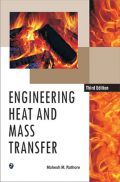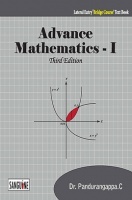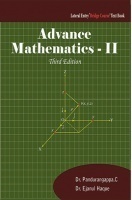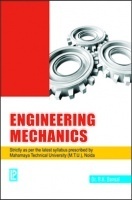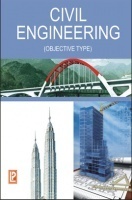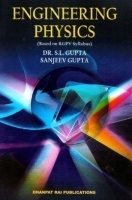Thermal Engineering Including Engineering Thermodynamics & Energy conversion Techniques eBook By P.L. Ballaney
About The Book
This is perhaps the only comprehensive text book on Thermal Engineering in SI units covering wide range of topics in a single volume. The author who has life time experience of teaching the subject of Thermal Engineering would like highlight the main features of the book as follows:
The book gives comprehensive and rigorous treatment of classical thermodynamics while retaining an engineering perspective to use the thermodynamics in the practice of engineering. This is amply illustrated by solved and unsolved problems on nozzles, turbines, compressors, and steam power plants with the basic concepts of First Law and Second Law of Thermodynamics. The Third Law of Thermodynamics has also been introduced substantially in the chapter on Combustion in the Appendix.
Thermodynamics properties are introduced very systematically and wherever possible with the laws of thermodynamics i.e. temperature by Zeroth law of thermodynamics, internal energy by First Law of Thermodynamics, entropy by the Second Law of Thermodynamics and Helmholtz and Gibbs functions in chapter on availability and finally, the thermodynamics of combustion, including enthalpy of formation, adiabatic flame temperature etc. have been added as appendix.
Chapter on Thermodynamic Relation is compiled and illustrated with solved problems to enable prepare table of properties from experimental data.
Chapter on properties of steam (pure substance) is introduced and illustrated with solved problems of engineering to get an insight into the working of substance with change.
Chapter on introduction to heat transfer does not to substitute a course on heat transfer but only working knowledge of the subject for all disciplines of engineering.
Reversed Carnot cycle has been emphasised by devoting a full chapter on it and its concepts have been extended to two phase systems. It hits directly on the concepts used for refrigeration engineering.
Beyond chapter eight, the chapters on Gas Cycle Refrigeration, Reciprocating Air Compressors, Simple Vapour Compression Refrigeration System and Properties of Refrigeration are so compiled and illustrated by solved and unsolved problems that besides university and students, the practicing engineers can directly use the subject matter in their field of applications.
Similarly the chapter on Stream Generators, Fuel and Combustion, Performance of Steam Generators, Steam Engines, Condensers, Rankine Cycle, Nozzles, Steam Turbines, modern Steam Plants have been compiled with ample information for co-relating theory and practice in steam engineering Problems chosen are very realist and field oriented. The recent concepts of high pressure boilers, co-generation, and binary vapour cycles for power plant engineering including techniques have been added with very practical field problems.
Steam Engineering is followed by Internal Combustion Engineering with emphasis on engines for automotive engineers which is main field for the application of this information. Vast subject has been condensed and presented with easy to understand problems.
Chapter on Gas Turbines is oriented to understand its applications for aircraft propulsion and automotive surface vehicles.
Chapter on Absorption refrigeration which has a very bright future in the saving of high grade energy has been dealt with in details and worked out with illustrative problems incorporated with data the field.
Psychrometry and air conditioning of spaces is dealt with in a separate full fledged chapter as it is becoming more and more popular.
Last but not the least the detailed up-to-date tables and charts which have been used in the book have been added to make the volume self contained with emphasis on CFC free refrigerants.







